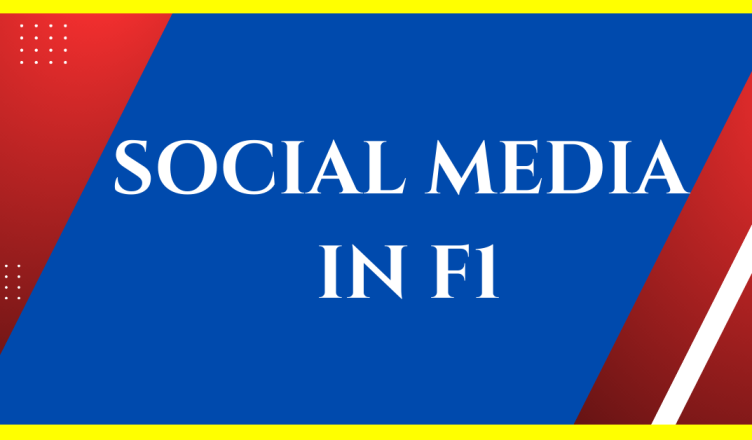Formula 1 (F1) has long been regarded as the pinnacle of motorsport, where speed, precision, and innovation converge.
In today’s digital age, social media has become an indispensable tool for F1 teams, drivers, and stakeholders to connect with fans and cultivate a global following.
This article explores the key aspects and strategies of social media marketing in the F1 industry, shedding light on how the sport has embraced this digital landscape to engage fans like never before.
Evolution of Social Media in F1
Over the years, F1’s presence on social media has evolved dramatically, mirroring the broader social media revolution.
What began as simple updates and race highlights has now transformed into a dynamic and immersive experience for fans worldwide.
F1’s social media channels have become the go-to platforms for real-time news, exclusive content, and behind-the-scenes access, captivating fans and fueling their passion for the sport.
Memorable campaigns like #F1BeyondTheGrid and #DrivenByEachOther have showcased the power of social media in shaping F1’s narrative and engaging a global fan base.
Key Social Media Platforms in F1
F1 stakeholders leverage a range of social media platforms to engage fans effectively.
Twitter serves as the hub of real-time updates and conversations, allowing teams, drivers, and fans to connect instantly during races.
Instagram offers a visually appealing space for showcasing F1’s glamour, with stunning imagery and engaging stories.
YouTube provides an avenue for longer-form content, including race highlights, interviews, and documentaries.
F1’s official Facebook page attracts a diverse audience, while newer platforms like TikTok offer bite-sized, shareable content that resonates with younger fans.
Each platform brings its unique advantages, and F1 stakeholders have mastered the art of tailoring content to maximize engagement.
Building a Strong Social Media Presence in F1
A strong social media presence in F1 begins with understanding the target audience and defining clear marketing goals.
Teams and drivers create content strategies that align with the F1 brand and values while captivating fans’ attention.
Utilizing visually stunning imagery, high-quality videos, and engaging multimedia content enables F1 stakeholders to stand out in the crowded digital space.
Interactive features, such as polls, quizzes, and challenges, allow fans to actively participate, fostering a sense of community.
Collaborations with influencers and strategic partnerships amplify reach and appeal to new audiences, ensuring a broader impact.
Measuring and Analyzing Social Media Success in F1
Measuring the impact of social media campaigns is crucial in understanding their success and optimizing future strategies.
Key metrics, such as reach, engagement, sentiment analysis, and conversions, provide insights into fan behavior and preferences.
Tools and techniques, like social media analytics platforms and sentiment analysis algorithms, enable F1 stakeholders to track and analyze data effectively.
Case studies of successful campaigns, such as Mercedes’ #TheBestNeverRest and Red Bull Racing’s #givesyouwings, demonstrate the tangible impact of social media marketing on F1’s brand value and fan loyalty.
Challenges and Opportunities in Social Media Marketing for F1
While social media presents incredible opportunities, it also brings its share of challenges for F1 stakeholders.
Managing online reputation and handling controversies in the public eye require nimble and proactive communication strategies.
Navigating the ever-changing landscape of social media algorithms demands constant adaptation and innovation.
However, these challenges also present opportunities for F1 to showcase its resilience, authenticity, and commitment to fan engagement, creating a stronger bond with its global community.
Future Trends in Social Media Marketing for F1
Looking ahead, the future of social media marketing in F1 promises exciting innovations and trends.
Augmented reality (AR) experiences, virtual reality (VR) content, and live streaming are poised to enhance fan engagement and offer immersive experiences.
Emerging platforms like Clubhouse and Twitch could provide new avenues for fan interaction and behind-the-scenes access.
F1 stakeholders must embrace these trends, constantly innovate, and stay ahead of the curve to maintain their position as trailblazers in the digital landscape.
Conclusion
Social media marketing has revolutionized the way F1 connects with its fan base, transforming the sport into a global phenomenon with unprecedented reach.
From engaging content strategies to real-time updates and interactive experiences, F1 stakeholders have harnessed the power of social media to captivate fans at the speed of a tweet.
As the digital landscape continues to evolve, it is imperative for F1 to adapt, innovate, and leverage emerging trends to fuel fan passion and cement its position as a leader in the world of motorsport.
Social media has become F1’s fuel, propelling the sport to new heights and ensuring an exhilarating journey for fans around the world.
